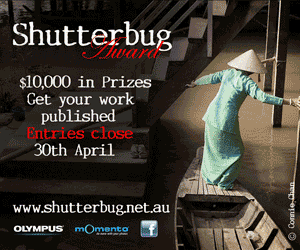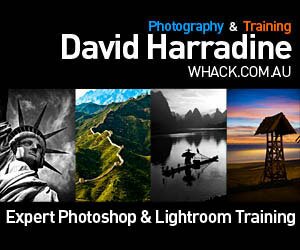|
|
|
| Photography Tip: A Malaysian Experience |
|
Glenn Guy / website At an altitude of between 1500 and 1800 meters the Cameron Highlands are Malaysia's largest and most impressive hill station. In addition to its agricultural base, the region has become a popular tourist destination offering a cool, calm and picturesque alternative to the heat, hustle and modernity of the countries larger cities. Indeed the highlands are marked as much by their splendid scenery as by the line of villages through which the main tourist road winds. The numerous tea plantations, gorgeous views, weekly night market, butterfly farm, walking trails and scenic drives ensure that you won’t be at a loss for things to see and photograph on your visit to the Cameron Highlands. Situated around 300km north west of Kuala Lumpur (KL), your Cameron Highlands adventure begins with a 31/2-hour drive from the capital. The first 2 hours follows the North-South Expressway to Tapah, after which the experience cranks up a notch with a beautiful, but exhilarating, 1½-hour ascent up the decent, but steep and narrow, road to Tanah Rata. Be prepared for numerous sharp bends along the way. My camera kit was based around a Hasselblad 503Ci body. This medium format camera produces a relatively large 6x6cm image offering very high resolving power. This ability to resolve fine detail is a key advantage associated with all formats larger than 35mm or comparable DSLR cameras. So, whether you’re working with film-based or digital, the larger the area onto which the image is recorded (e.g. film or sensor) the higher the resolving power. I complimented my camera with Hasselblad 150mm Sonar f4, 80mm Planar f2.8 and 50mm Distagon f4 lenses. Known for their excellent sharpness and color fidelity I was confident I had a kit that, in the world of medium format film-based photography, was hard to beat on any objective measurement of quality. However, up until the release of the Hasselblad digital system, all medium format Hasselblad camera’s produced square images. And the square format is not for everyone. I chose Kodak Portra 160VC film for similar reasons. It’s a great option for the range of images (people, landscape and architecture) I would usually make on such a trip. And for added impact I rate the film at an EI (Exposure Index) of 80. An EI is like a personalised ISO, arrived at through laborious testing based upon your own equipment, exposure method and film processing conditions. By down rating the film (e.g. 160 down to 80) your photographs will benefit from enhanced shadow detail and increased color saturation (more vivid color reproduction). Instead of undertaking all the necessary tests it’s safe to say that most folks will be happy with the results achieved by halving the ISO rating of their film. Your only concern will be if the majority of your images appear to exhibit burnt out highlights displaying, as a result, a lack of highlight detail. The solution is to decrease film development time by 10%. This is straightforward for those folks processing their own black-and-white film. But, in the case of color negative (print) film, that kind of adjustment is extremely difficult to achieve when the film is processed by a busy and/or highly automated laboratory. The solution is to establish a compromise Exposure Index, in this case somewhere between 80 and 160. Be aware that the practice of halving a film’s nominal ISO is appropriate for negative films, both color and black-and-white. Appropriate exposure and processing of transparency (slide) film is another thing altogether. For this trip I employed a Lowepro Nature Trekker AW backpack to provide a safe and efficient storage vessel. An old, but sturdy, manfrotto tripod provided a rigid support base and, by slowing down the picture making process, allowed me to pay more attention to aspects of design and composition. As tea is a major element in the region’s history I set myself the task of making at least one image featuring a tea plantation. I found just the spot, with a great vantage point from a small teashop, along the main road from Ringlet to Tanah Rata. As is evident in the above image, this is also a great spot for scenic photography. I simply wandered along the road a short distance, set up my tripod and composed the image. The 150mm Sonnar lens provided me with a mild telephoto effect and allowed me to concentrate attention on the most important part of the scene before me. Interested in the textural and emotive qualities before me I set my lens to f22 to achieve a large depth of field and, thereby, maximize detail throughout the image. It was late afternoon so the narrow aperture and relatively low film speed required a 1-second exposure. The high vantage point enabled me to reveal more of the scene than would have been the case if photographing over flat terrain. One of the reasons the scene appears so calm and picturesque is due to its inherent color qualities. Notions associated with nature, peace and relaxation are a direct result of the dominance of the color green throughout the image. Fortunately the orientation of the hills, in relation to the light, and the splashes of reddish soil, adds a sense of balance by emphasizing the shape and 3-dimmensional space within the scene.  As you continue your drive be open to the possibility of a quick detour, along one of many side roads, to easily accessible mountaintop panoramas. Who knows what serendipitous events might unfold, just around the next bend? As you continue your drive be open to the possibility of a quick detour, along one of many side roads, to easily accessible mountaintop panoramas. Who knows what serendipitous events might unfold, just around the next bend?One such detour brought my friend, Cutts, and I to a fascinating place. Located high on a hill, overlooking the town of Brinchang, the Buddhist Sam Poh Temple offers the visitor a veritable feast of color. Dedicated to the renowned Chinese Admiral and Muslim eunuch, Zheng He, I found the temple to be a very serene and peaceful place. I’ve found it a good practice, when undertaking serious photography in a temple, to make a donation. By doing so you’re helping to support the upkeep of the complex and the needs of the monks and nuns based there. It’s nice to know that each small donation will help to continue the preservation of such important places. Of course you’re likely to draw attention to yourself by making pictures with an expensive camera, particularly when tripod-mounted. This could make you a distraction to the devotee and, potentially, cause conflict with any monks on duty. I’ve found that making an appropriate donation does, more often than not, provide me with the extra time I need to make the photos I need to make in the way I need to make them. As I believe my reasons for making the pictures are pure I have no problem with this situation. And because it’s my mission to use photography to record, preserve and communicate the beauty of our world and its people, including their belief systems and cultural practices, I have no trouble rationalizing my actions. As with everything, it’s a matter of perspective. In the above image I decided to take a relatively straightforward documentary, almost forensic, approach to making the image. Again I set my aperture to f22 to achieve a large depth of field (DOF) and, thereby, produce maximum detail. The narrow aperture, low light levels and relatively slow film speed required a 4-second exposure. What for many folks in the West is no-doubt gaudy color is, for me, fascinating and an important element that needs to be documented as part of gaining an understanding of the way such cultures represent deities, spirituality and the afterlife. After scanning the negative I could easily have employed Adobe Lightroom or Photoshop, my preferred image processing applications, to dramatically reduce the scenes color saturation, but that would not have been accurate to the reality of the temple. And, in this case, it seemed appropriate to do my best to accurately convey that reality. I visited the highlands over the Christmas period and, as a result, found the region to be unusually quiet. As a result it was relatively easy to pull the car over and make landscape images right next to the car. Unfortunately opportunities to make portraits were more limited. Returning a few weeks either side of Christmas would provide more portrait opportunities. And, as December and January are climatically more comfortable times to visit Malaysia, that’s exactly what I plan to do on my next visit to the Cameron Highlands. As most sites of interest are within easy walking distance of your car, carrying a moderately sized camera kit isn’t too much trouble. For anyone interested in undertaking longer hikes then a sling-style or camera backpack would be advisable. A leisurely car tour will probably get you to most of the major highlights over a two to three day period and provide you with enough time for several sunrise and/or sunset shoots. |






 Buy-n-Shoot.com site contributor:
Buy-n-Shoot.com site contributor:



